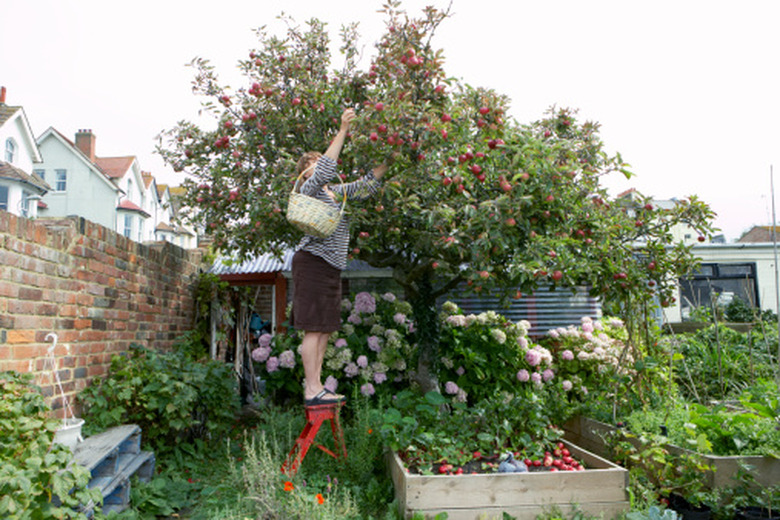Do Apple Trees Lose Their Leaves In The Winter?
Each fall and into winter, apple trees lose their leaves until the following spring. In spring, the tree produces brand new leaves that will stay on the tree through the summer and into the fall.
Description
All apple trees are deciduous, meaning they lose their leaves every year. The leaves usually turn yellow or brown right after the fruit matures and fall completely off the tree by the start of winter. The trees go into a dormant stage during winter, meaning that no new growth occurs during the cold season.
Cleanup
To prevent pests from overwintering on the ground under your apple trees, rake up dead, fallen leaves and properly dispose of them. Removing rotting fruit lying under the tree keeps pests from using the fruit as a place to overwinter.
- Each fall and into winter, apple trees lose their leaves until the following spring.
- The leaves usually turn yellow or brown right after the fruit matures and fall completely off the tree by the start of winter.
Budding
In mid to late March, apple trees start producing leaf buds as they come out of the dormant stage. The buds turn into new leaves that stay on the tree the rest of the summer and into fall.
Apple Trees In The Winter Time
Winter in mild climates where the ground does not freeze is a good time to plant apple trees. When planting the tree, you need to dig a hole that will accommodate all of the roots so they don't bend or clump together. The winter dormant season is the best time to prune apple trees. The goal of winter pruning is to shape the tree into an open shape, remove dead or dying growth and to preserve 1-year-old spurs on which the apples will grow. Chill hours include every hour when the air temperature around your apple tree is between 33 and 45 degrees Fahrenheit. Low-chill apples include "Anna," "Ein Shemer," "Tropical Beauty," "Beverly Hills" and "Gordon."
- In mid to late March, apple trees start producing leaf buds as they come out of the dormant stage.
- The goal of winter pruning is to shape the tree into an open shape, remove dead or dying growth and to preserve 1-year-old spurs on which the apples will grow.
References
- Texas A&M System AgriLife Extension: Home Fruit Production — Apples
- University of California Cooperative Extension: Low-Chill Apples
- Harvest to Table: Apple Pruning
- Napa Valley Register.com: Winter is the Best Time to Plant Trees
- Harvest to Table: How to Grow Apples
- GrowOrganic.com: Chill Hours – What are They? How Do I Count Them? And Why Do My Fruit Trees Care?
- University of California Cooperative Extension: Apples and Pears – Calendar of Operations for Home Gardeners
- GrowOrganic.com: Apple Tree Care – Pruning and Dormant Sprays
